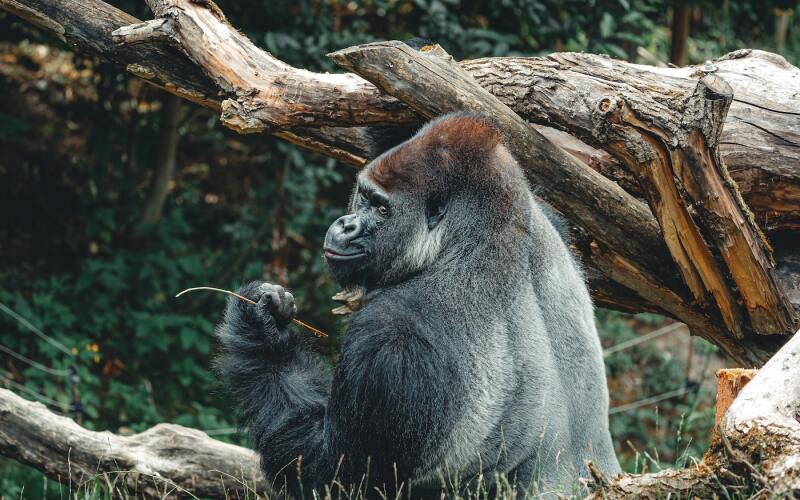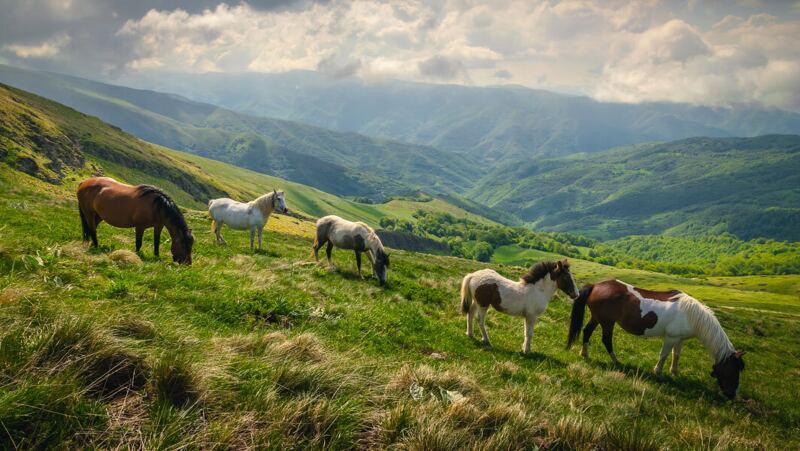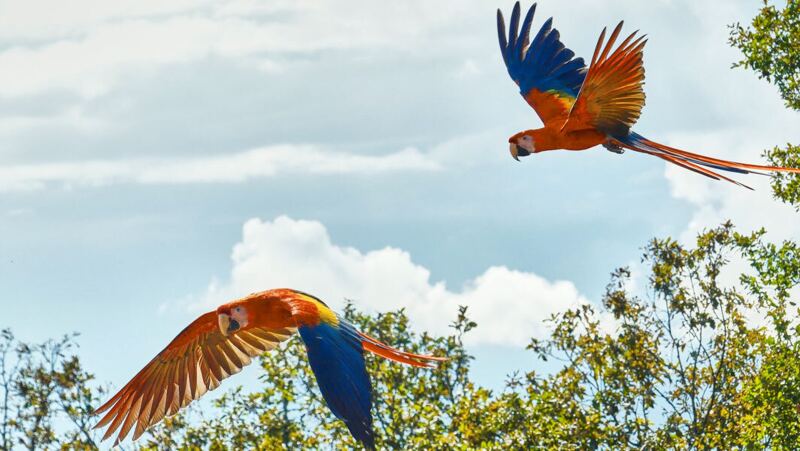Oh, baby it’s a wild world.
People go to great lengths to see exotic animals on their travels
Braving the bitter cold of Antarctica to observe penguins, shelling out big to experience the great migrations of the Serengeti, and diving in shark-infested waters in Australia to swim with, well, sharks. But animal tourism isn’t always so cute and cuddly. Animals kept in captivity for tourism purposes, from “zoos” to elephant corrals, are frequently abused and mistreated.
However, there are still ways to ethically include animals into your vacation—by choosing wildlife outfitters, safari lodges, sanctuaries, and tour experiences that are committed to animal welfare and habitat preservation. And the search to find ethical organizations doesn’t need to be a wild goose chase! In this guide, you’ll find resources that will help you discern what makes an animal experience ethical, as well as pointers to plan your next trip, whether that be in the United States or abroad. And, to really get in the spirit, check out our stories from animal lovers across the world, from a burgeoning “craniac” to a self-proclaimed safari enthusiast.
- Mae Hamilton
_________________________________________________
The ABC’s of Animal Tourism

Photo by Daniel Diesenreither/Unsplash
Is There Such Thing as Ethical Animal Tourism?
I’ll never forget the first time I saw a bullhook. In the late 90s, I visited the Big Apple Circus in New York City. Performers and crew members preparing for the night’s show raced around in an atmosphere that smelled of caramelizing cotton candy, hot peanuts, and animal manure. I was standing near a staging area when I saw a young girl wearing a sparkly costume and walking with an elephant. She held a stout pole with a metal hook at its end and I asked her what it was for. She raised her arm, made a fierce face, and said, “To hit them when they don’t obey.” My face flushed with shame—I considered myself an animal lover. Yet, I hadn’t known the elephants suffered for my entertainment. I felt foolish and sad. And I vowed to learn more.
Everything You Need to Know About Wildlife Corridors—and Where to See Them
Yeah, yeah, we all know why the chicken crossed the road. But figuring out how a chicken could cross the road—especially in the age of six-lane highways and railroad crossings—is a far more pressing question for conservation biologists. The answer to the riddle may be wildlife corridors, which provide a “bridge” between habitats that have been separated by human activity. From elephant underpasses to crab bridges, these animal-friendly pathways provide safe passage for all kinds of critters and score big points for communities interested in ecotourism.
_________________________________________________
Straight From the Horse’s Mouth

Photo by Beliphotos/Shutterstock
The Great Nebraska Migration of the Sandhill Cranes and the Birders Who Love Them
I roll into Kearney, Nebraska in the pitch dark and hop out of my rental Buick at the Best Western Plus. I’m greeted first by a smell on the wind: the striking, wild, pungent attestation of livestock farming. It’s fantastic. I’m here.
It’s spring, and the sandhill cranes are making their annual journey north along the Central Flyway from southern Texas up into the northern reaches of Canada. For a couple weeks, these three- to four-foot-tall wading birds will take an intermission along this 75-mile stretch of Nebraska’s Platte River to stock up on food—remnants of last year’s corn harvest—and roost by night in massive numbers in the river’s shallow waters.
_________________________________________________
Botswana’s Chobe Game Lodge Is Changing Safaris With All-Women Guide Teams
As guests arrive at Kasane International Airport in the northeastern corner of Botswana, a woman driver begins to load luggage onto an open-air jeep. Wearing a khaki uniform with a red and white scarf tied neatly around her neck, she helps the fresh arrivals into her vehicle and cruises through the city’s asphalt roads until she arrives at the entrance of Chobe National Park. As she navigates the park’s bumpy dirt path, she points out blossoming fever berry trees, starlings winging away overhead, and a savanna elephant plodding along as her passengers ooh and ahh. She pauses for a moment to breathe in the air of the plains, before continuing on to join her 19 other fellow safari guides at Chobe Game Lodge—all of them women.
_________________________________________________
This Lion Safari Gives Travelers a Deeper Look at Wildlife Conservation in Africa
I had barely landed at Phinda Airport when I caught my first glimpse of lions.
I peered through the window of the bush plane at andBeyond Phinda Private Game Reserve, located in a remote corner of South Africa’s KwaZulu-Natal province, and couldn’t believe my eyes. About a half dozen drowsy felines taking shade beneath an acacia tree near the tarmac began to rise from their nap. They stretched, then meandered away from the sound of our propellers. I’ve been on close to two dozen safaris in eastern and southern Africa, and lion sightings rarely come this easy. It’s as if these cats knew I was on a lion-themed safari and were here to greet me at the start of my journey.
_________________________________________________
Journalist Peter Martell on How Conservation Brought Kenyan Communities Together
Peter Martell is a British reporter who spent the past two decades as a correspondent for the BBC and Agence France-Presse, covering war, famine, and climate change across East Africa. His second book, Flowers for Elephants: How a Conservation Movement in Kenya Offers Lessons for Us All (March 2022, Hurst Publishers), includes many of these themes—but in a fresh and inspiring way. It tells the incredible story of how communities across northern Kenya worked together to create a network of protected lands across an area larger than Switzerland.
_________________________________________________
Wild Trip Inspiration

Photo by Ilona Froehlich/Unsplash
The 10 Best Places in the U.S. to See Wildlife
With nearly 3,000 different types of native animal species in the United States and 18,000 types of plants, this is one of the world’s most ecologically rich countries—in fact, it’s recognized by the World Conservation Monitoring Center as one of 17 mega-diverse nations. From Maine’s rocky shores to the green rain forests of Washington, there’s much to see and do right here at home—no long-haul plane ticket or safari lodge reservation required.
_________________________________________________
The Best International Trips for Wildlife Lovers
Encountering animals in their natural habitat is a sublime and unforgettable experience—and there are so many organizations angling to provide those moments for their guests. For every legitimate, ecofriendly operator, there are untold numbers whose practices are questionable, if not exploitive.
AFAR wants to help you find the best international trips to see wildlife in a responsible way. We have vetted a number of lodges and operators that embrace wildlife viewing practices that are ethical, sustainable, and socially responsible and offer close encounters—without getting too close.











